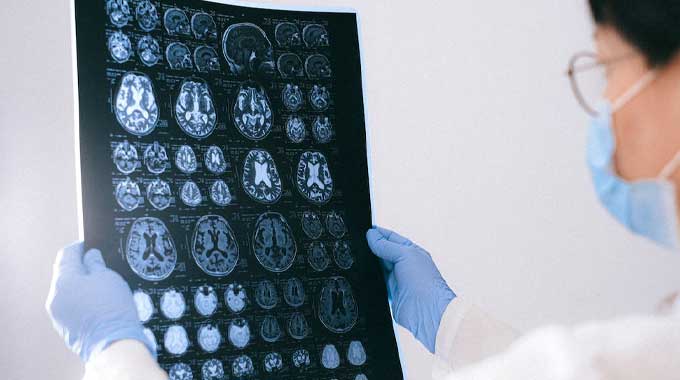What is Chronic Pain?
Chronic pain is any type of persistent pain for longer than twelve weeks. Pain signals are received in the brain via the spinal cord and nerve pathways, which receive information from pain receptors around the body.
- What Is Chronic Pain
- What Is Transcranial Magnetic Stimulation
- Can Tms Therapy Be Used For Chronic Pain
- Possible Side Effects Of Tms
- How Does Tms Help Treat Chronic Pain
- How Can You Treat Multiple Mental Health Conditions With Tms
- The Effectiveness Of Tms In Treating Chronic Pain
- Types Of Chronic Pain Tms Can Treat
- What To Expect During A Tms Session
- How Long Do Tms Sessions Last
- How Much Does Tms Cost
- Contact Us
The most common reason for chronic neuropathic pain is an injury or accident, where the individual is left with long-term nerve damage that extends beyond the typical healing period and has not been able to make a full recovery. The debilitating condition can also be triggered by an overarching disorder, such as:
- Diabetes
- Arthritis
- Irritable bowel syndrome (IBS)
- Fibromyalgia
In many cases, people are not even able to locate the source of their chronic pain and are left searching for the cause over extended periods.
What Is Transcranial Magnetic Stimulation?
Transcranial magnetic stimulation (TMS) is a deep brain stimulation technique that has been used to treat a range of mental health conditions in a wide variety of medical settings. TMS is a non-invasive, Food and Drug Administration (FDA) approved method that targets the motor cortex, the area of the brain involved in mood and emotion regulation.
First developed in 1985, the technique uses a magnetic coil to influence the brain’s natural electrical activity. Motor cortex stimulation has been shown to be effective in pain management and this area can be stimulated in several ways. Epidural motor cortex stimulation has also been employed to help treat pain disorders.
Repetitive transcranial magnetic stimulation (rTMS) is commonly used interchangeably with TMS. The only difference is that rTMS refers to an ongoing neuropathic pain treatment plan with regular sessions, whereas TMS is the overarching term which could mean a few sessions or a complete treatment program.

Changing the pulse pattern of the procedure is another way in which it can be altered. Theta-burst stimulation (TBS) is an example of this, where a triplet of 5 hertz (Hz) bursts happen in just one second. This technique hugely speeds up treatment, being five-to-six times faster than regular TMS.
Different kinds of magnetic coils may also be recruited during TMS sessions. For example, deep TMS (dTMS) targets deeper brain structures and uses an H-shaped helmet coil.
Can TMS Therapy be Used for Chronic Pain?
There is currently no cure for chronic pain, though symptoms of the condition can be managed. Physical therapy and medication are currently the most widely used methods in controlling pain. However, these are largely ineffective and can result in adverse side effects.
To solve these issues, the non-traditional approach of TMS is becoming a more accepted and widely used approach when dealing with chronic pain. The stimulation technique is appealing to many due to the fact it is:
- Low-risk
- Drug-free
- Side effect free
- Virtually painless
- Has a high success rate
Possible Side-Effects of TMS
During and after treatment, there are some side effects that can occur, including:
- Headaches
- Dizziness
- Scalp itching/tingling
- Facial spasms

How Does TMS Help Treat Chronic Pain?
The technique works via the use of electromagnetic pulses which produce high-frequency stimulation of nerve pathways in the motor cortex. More specifically, these pulses impact the dorsolateral prefrontal cortex- the region of the brain that regulates:
- Pain perception
- Planning
- Decision making
- Short-term memory
- Personality expression
- Speech
- Language
- Social behavior
The stimulation of the nerve cells in this area resets the system and reduces the excitability of signals traveling to the parietal lobe – the region involved in pain modulation. In turn, this dulls neuropathic pain intensity and offers relief for individuals dealing with chronic pain conditions.
How Can You Treat Multiple Mental Health Conditions with TMS?
When individuals have exhausted other medication and therapy options with no noticeable improvements, TMS has also been used to target other specific mood disorders, such as:
- Treatment-resistant depression
- Obsessive-compulsive disorder (OCD)
- Anxiety disorders
Transcranial magnetic stimulation (TMS) treatments can also be used in the reduction of depressive symptoms. The difference between the approach of TMS treatment to control chronic pain conditions and these other mental illnesses is the specificity of the region being targeted.
Instead of the electromagnetic pulses targeting all nerve cells in the prefrontal motor cortex, the aim is to aim for brain structures and pathways associated with chronic pain. As this part of the brain has multiple important functions, this is extremely important to avoid unwanted side effects.
The Effectiveness of TMS in Treating Chronic Pain
Undergoing multiple TMS sessions can cause a significant reduction in pain levels and provide much-needed pain relief. There have been multiple clinical randomized controlled trials that have looked into its effectiveness, with largely positive results coming back.
One study firstly asked the participants to rate their pain on the eleven-point Likert scale. After the chronic pain treatment, the pain scores indicated a reduction to 1.5 on average after receiving transcranial magnetic stimulation therapy.
Another found that the patients receiving TMS benefited several days after treatment and around half experienced significant pain reduction, with the pain relief lasting for months after the initial treatment sessions.

Types of Chronic Pain TMS Can Treat
TMS can provide significant pain relief from:
- Chronic pain syndrome – pain that lingers long after an accident, injury, or illness
- Chronic neuropathic pain – nerve damage, post-shingles neuroglia, and carpal tunnel syndrome
- Fibromyalgia
- IBS
- Back pain
What To Expect During a TMS Session?
It can be daunting to undergo TMS for chronic pain, with the concept of neurological stimulation seeming foreign and scary. However, the procedure is actually very simple to administer, virtually painless to receive, and safe.
A TMS session will start with the person receiving treatment being asked to remove any metallic jewelry or glasses frames, before being guided to a chair and being asked to wear earplugs. An electromagnetic coil will be placed on the side of their head by a TMS technician who then uses it to deliver pulses. Their job is also to adjust the strength of the electromagnetic signals to reach the motor cortex threshold – the amount of energy it takes to get the person’s hands to twitch.
People commonly hear clicking noises and feel slight tapping on their heads, though this is just the noise of the coil delivering the pulses to the brain structures in the primary motor cortex and is nothing to worry about.
How Long Do TMS Sessions Last?
TMS sessions take between thirty-to-forty minutes to complete. The little amount of time the treatment takes up is also another positive of this approach. Although the length of rTMS depends upon each person’s specific needs, the treatment course lasts around four-to-six weeks.
How Much Does TMS Cost?
As TMS is a cutting-edge treatment, which is reflected in the current cost. A single session of transcranial magnetic stimulation to treat chronic pain can cost around $300, with a source of treatment ranging between $6,000 to $12,000.
However, this treatment can save lives, hugely transform people’s quality of life, and save money on future medical bills. Some treatment providers offer coverage in part or whole for treatments such as this. The best way to find out how much you may need to pay is to contact them directly.

Contact Us
To find out more about TMS therapy to treat chronic pain, contact GIA Chicago today to receive treatment that will transform your life. Our expert team of medical professionals can advise you on treatment options and help you take the step to a future of significantly less pain.





